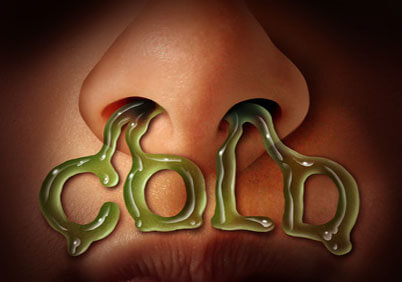Nasal Drainage: What is the significance of discolored mucous?

Nasal drainage is an inconvenient and often embarrassing symptom that often accompanies upper respiratory infections and allergic rhinitis. However, this cumbersome mucous serves an important purpose. Mucous-producing tissue lines the nose, sinuses, throat, mouth, lungs, and gastrointestinal tract. Mucus works as a protective blanket over these surfaces and prevents the tissue under these areas from drying out. It has antibodies to help the body recognize and kill viruses, enzymes and bacteria. A change in the color of nasal drainage signals a bacterial infection. The post discusses the reasons behind the change in the color of mucus and possible treatments.

Change in Mucuos Color
Mucus isn’t always clear and could be green, yellow or brown – but what does the color depict? Multiple colors in the mucus could be because of its concentration. Thick and sticky mucus is mostly green in color. If the mucus has a tinge of brownish or red blood, it may be the result of a dried or irritated nose because of excessive picking, rubbing and blowing. While a small amount of blood in the mucus isn’t something to worry about, but an individual needs to see a doctor upon noticing a large volume of blood in the mucus as this could represent polypoid disease or even a tumor.
Yellow, green or brown mucus is a sign of infection in the upper respiratory tract. It is difficult to distinguish between bacterial and viral infection by seeing the color of the mucus, but the physician might look for other signs to determine bacterial infection and prescribe antibiotics. Generally, the discoloration of the mucous is from the presence of dead white blood cells usually indicating the presence of a bacterial infection.
Need for Antibiotics
Yellow, brown or green mucus may also be a sign of bacterial infection and the doctor might prescribe antibiotics to cure the problem. An antibiotic is not required to treat most types of cold and flu, but secondary bacterial infection such as chest infection or sinusitis, antibiotic could be prescribed.
Sinusitis – Headaches, sinus pain and nasal obstruction with yellow or thick green mucus indicates sinus infection and needs an antibiotic.
Bronchitis or chest infection – Cough with blood-stained or thick yellow, green mucus may be a sign of bronchitis or chest infection and it is necessary to take antibiotics for relief.
Things to Consider
Green or yellow color thick mucus is usually a sign of infection. When an individual has a cold, the immune system sends neutrophils (white blood cells) to the areas and these cells contain green-colored enzymes, which could change the color of the mucus. Allergies, use of intranasal drugs or trauma may also be the reason for nasal discharge, but it is more likely to be clear in most cases. If the symptoms persist or become severe, it is recommended to consult the doctor for assessment and treatment. To learn more about nasal drainage, you may get in touch with the doctors at the Houston Advanced Nose and Sinus for a no obligation consultation.

